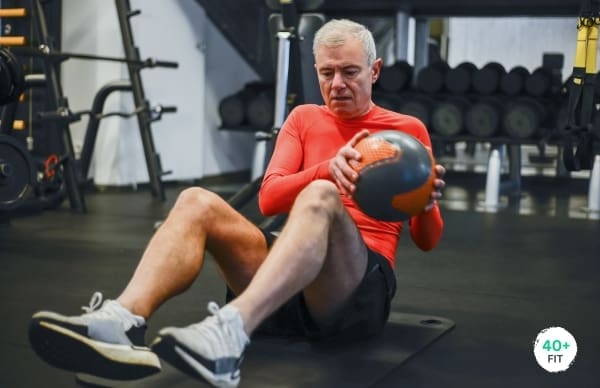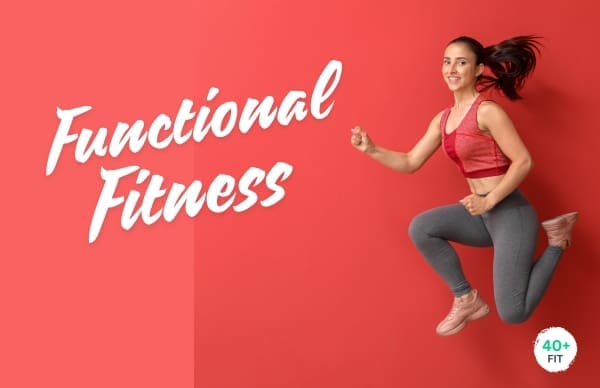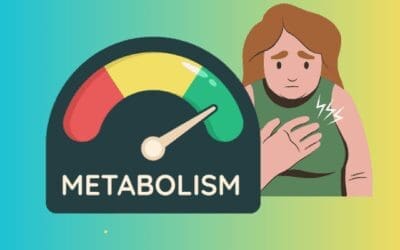As we age, the demands on our bodies shift, and maintaining overall health becomes more complex. Functional fitness, a training philosophy that focuses on enhancing the body’s ability to perform everyday activities, offers a powerful solution for those over 40.
This article delves deep into the concept of functional fitness, its components, history, benefits, and how it differs from other forms of exercise. We’ll also explore why functional fitness should be an individualized program, especially for those in their 40s and beyond, and guide you on how to get started with exercises tailored to your specific needs.
What is Functional Fitness?
Functional fitness is a training approach centered on exercises that mimic real-life movements and activities. The core idea is to enhance your ability to perform everyday tasks with ease, such as carrying groceries, climbing stairs, or even playing with your grandchildren. Unlike traditional exercise routines that might focus on aesthetics or isolated muscle groups, functional fitness emphasizes full-body movements that engage multiple muscle groups simultaneously.
Functional fitness exercises are designed to improve strength, balance, flexibility, and endurance—all vital components for maintaining independence and quality of life as we age. By focusing on movements you use in daily life, this type of training not only makes you stronger but also reduces the risk of injury, enhances mobility, and improves overall functionality.
The Individualized Nature of Functional Fitness
One of the most critical aspects of functional fitness is its individualized nature. What is functional for one person might not be functional for another. For example, a functional movement for a construction worker might be lifting heavy objects safely, while for an office worker, it might be improving posture and reducing back pain from prolonged sitting.
This individuality makes functional fitness programs highly personalized. Generic group programs may offer a good workout but often fail to address the specific needs of each participant. These classes are typically designed for mass appeal and may not account for individual limitations, strengths, or goals. A personalized functional fitness program considers your unique lifestyle, health conditions, and fitness levels, making it a more effective approach.

5 Components of Functional Fitness
To fully understand functional fitness, it’s essential to break down its key components:
- Strength: Strength is the foundation of functional fitness. It allows you to perform daily tasks with ease and reduces the risk of injury. Functional strength exercises focus on improving the muscle groups you use most in your everyday life, like lifting, pushing, and pulling.
- Flexibility: Flexibility is crucial for maintaining a full range of motion in your joints, which helps prevent injuries and allows you to move more freely. Functional fitness includes stretches and exercises that target the muscles and joints you use most often.
- Balance: Balance becomes increasingly important as we age, as it helps prevent falls and maintain stability during movement. Functional fitness incorporates balance training to improve stability in various positions and movements.
- Endurance: Endurance is the ability to sustain physical activity over time. Functional fitness builds endurance through exercises that mimic real-life tasks, such as walking, lifting, or climbing stairs, enabling you to perform daily activities without fatigue.
- Coordination: Coordination is the ability to execute smooth and efficient movements. Functional fitness improves coordination by engaging multiple muscle groups simultaneously, training your body to work as a cohesive unit.
Each of these components plays a crucial role in enhancing your overall functionality. When combined, they create a balanced and effective workout regimen that prepares your body for the physical demands of daily life.
History of Functional Fitness
The concept of functional fitness isn’t new; its roots can be traced back to rehabilitation and physical therapy. Originally, functional exercises were developed to help patients recover from injuries and surgeries, focusing on movements that would restore their ability to perform daily activities.
Physical therapists and rehabilitation specialists recognized that traditional exercises often isolated muscles in ways that didn’t translate well to real-life activities. Instead, they began to incorporate movements that engaged multiple muscle groups in a coordinated manner, more closely mimicking the actions patients would need to perform outside the therapy room.
Over time, the fitness industry took notice. Trainers and fitness professionals began to adopt these principles, recognizing that functional exercises could benefit everyone, not just those recovering from injury. Today, functional fitness is a cornerstone of many training programs, especially those designed for older adults who want to maintain their independence and quality of life.
6 Benefits of Functional Fitness for Over 40s
For individuals over 40, the benefits of functional fitness are profound and far-reaching. Here’s how this approach can enhance your health and well-being:
- Improved Sleep Quality: Regular functional fitness training can lead to better sleep by reducing stress and promoting relaxation. Exercise helps regulate your sleep-wake cycle, making it easier to fall asleep and stay asleep. This is particularly important for those over 40, who may experience changes in sleep patterns due to hormonal shifts and other age-related factors.
- Enhanced Daily Functionality: Functional fitness directly improves your ability to perform everyday tasks. Whether it’s bending down to tie your shoes, lifting heavy objects, or simply getting up from a chair, functional exercises make these movements easier and less taxing on your body.
- Injury Prevention: As we age, the risk of injury increases, particularly from falls or strains. Functional fitness strengthens the muscles and joints you use most, improving balance, flexibility, and coordination—all of which are crucial for preventing injuries.
- Increased Mobility and Independence: One of the biggest concerns as we age is losing mobility and independence. Functional fitness keeps your body agile and strong, allowing you to move freely and maintain your independence well into your later years.
- Boosted Mental Health: Regular physical activity has been shown to reduce symptoms of depression and anxiety. Functional fitness, in particular, can be empowering because it focuses on practical, real-world applications of strength and movement, giving you confidence in your physical abilities.
- Customizable to Your Needs: Because functional fitness is so individualized, it can be adapted to suit your specific health conditions, limitations, and goals. This makes it a versatile and effective approach for anyone over 40, regardless of fitness level.

How Functional Fitness Differs from Other Forms of Exercise
Functional fitness sets itself apart from other types of exercise in several key ways, making it particularly beneficial for those over 40:
- Holistic and Practical: Traditional exercise routines often focus on specific outcomes, such as building muscle mass or improving cardiovascular endurance. While these are valuable, they don’t always translate directly to improved daily functionality. Functional fitness, on the other hand, is designed to enhance your ability to perform the activities you do every day, making it a more practical choice for overall health and well-being.
- Emphasis on Movement Patterns: Functional fitness exercises mimic the movement patterns you use in daily life. For example, instead of doing a seated leg press, which isolates the quadriceps, you might do a squat, which engages the legs, core, and back in a way that replicates the action of sitting down and standing up. This approach ensures that the strength and mobility you gain are directly applicable to real-world activities.
- Individualized Approach: Unlike one-size-fits-all exercise programs, functional fitness is highly individualized. A functional movement that’s beneficial for one person may not be necessary or even safe for another. For instance, someone with knee problems might focus on strengthening their core and improving balance, while another person might need to work on hip mobility and leg strength. This level of customization is crucial, especially for older adults who may have specific health concerns.
- Real-World Application: Traditional exercise often involves machines or movements that don’t closely resemble anything you’d do outside the gym. Functional fitness, however, is all about preparing your body for real-world activities. Whether it’s lifting, reaching, or twisting, the exercises you do in functional fitness directly improve your ability to handle these tasks in your everyday life.
Example: Consider the difference between a leg extension machine, which isolates the quadriceps, and a lunge, which works multiple muscle groups and requires balance and coordination. While the leg extension might build muscle, it doesn’t improve your ability to move in a functional way, like climbing stairs or getting up from the floor. The lunge, on the other hand, directly translates to these everyday movements, making it a more functional exercise.
Functional Fitness Training Exercises for Beginners
If you’re new to functional fitness, starting with the right exercises is essential to building a strong foundation. Here are some beginner-friendly functional fitness exercises that can help you get started:
- Bodyweight Squats: Squats are a fundamental movement that builds strength in the legs and core while improving balance and flexibility. They mimic the action of sitting down and standing up, making them highly functional.
- How to Perform: Stand with your feet shoulder-width apart. Lower your body as if you’re sitting back into a chair, keeping your chest up and your knees behind your toes. Push through your heels to return to a standing position.
- Push-Ups: Push-ups are a great way to build upper body and core strength. They engage multiple muscle groups, including the chest, shoulders, triceps, and core.
- How to Perform: Start in a plank position with your hands shoulder-width apart. Lower your body until your chest nearly touches the floor, keeping your elbows close to your body. Push yourself back up to the starting position.
- Planks: Planks are an excellent core exercise that also strengthens the shoulders and back. They improve stability and can help prevent back pain.
- How to Perform: Start in a forearm plank position with your elbows directly under your shoulders. Keep your body in a straight line from head to heels, engaging your core and glutes. Hold the position for as long as you can while maintaining good
- Lunges: Lunges are another foundational movement that strengthens the legs, improves balance, and increases flexibility. They simulate walking, climbing stairs, and other activities that require coordinated lower-body strength.
- How to Perform: Stand with your feet together. Step one foot forward and lower your hips until both knees are bent at about a 90-degree angle. Keep your front knee over your ankle and your back knee hovering above the ground. Push through your front heel to return to the starting position, then switch legs.
- Deadlifts: Deadlifts target your hamstrings, glutes, and lower back, replicating the action of lifting heavy objects from the ground. This exercise is crucial for building the strength needed to perform daily tasks like picking up groceries or lifting boxes.
- How to Perform: Stand with your feet hip-width apart, holding a weight (like a kettlebell or dumbbell) in front of you. Keeping your back straight, hinge at the hips to lower the weight towards the ground, bending your knees slightly. Push through your heels to return to a standing position, squeezing your glutes at the top.
- Step-Ups: Step-ups are an excellent way to build leg strength and balance, mimicking the action of climbing stairs. They also engage your core, making them a well-rounded functional exercise.
- How to Perform: Stand in front of a sturdy step or bench. Place one foot on the step and push through your heel to lift your body up, bringing the other foot to meet it. Step back down with the same foot and repeat on the other side.
- Farmer’s Walk: The farmer’s walk is a simple yet highly effective exercise that builds grip strength, core stability, and overall endurance. It simulates the action of carrying heavy loads, like groceries or luggage.
- How to Perform: Hold a heavy weight in each hand, standing upright with your shoulders back. Walk forward in a straight line, keeping your core engaged and your steps steady. Continue for a set distance or time.
- Bird Dog: The bird dog exercise improves balance, stability, and core strength, making it a great choice for functional fitness. It also helps with coordination by requiring you to move opposite limbs simultaneously.
- How to Perform: Start on all fours with your hands under your shoulders and knees under your hips. Extend your right arm forward and your left leg back, keeping your back flat and hips level. Hold for a few seconds, then return to the starting position and switch sides.
Functional Fitness for Over 40s: A Tailored Approach
As we’ve discussed, functional fitness is a highly individualized training method that should be customized to fit your unique needs, especially if you’re over 40. Here’s why a tailored approach is so crucial:
- Age-Related Considerations: As we age, our bodies change in ways that can affect our ability to perform certain exercises. Joint stiffness, muscle imbalances, and past injuries are common concerns. A personalized functional fitness program takes these factors into account, ensuring that the exercises you do are safe and effective.
- Specific Goals and Lifestyle: Your functional fitness routine should reflect your specific goals and daily activities. Whether you want to improve your mobility, gain strength, or simply maintain your independence, your program should be designed with these objectives in mind.
- Health Conditions: Many people over 40 have health conditions that require special attention, such as arthritis, osteoporosis, or cardiovascular issues. A customized functional fitness program will incorporate modifications to ensure you’re working out safely while still achieving your fitness goals.
Example: Let’s say you’re experiencing lower back pain from years of sitting at a desk. A functional fitness program tailored to your needs might include exercises like planks and bird dogs to strengthen your core, improve posture, and alleviate back pain. In contrast, a group program might not address your specific issues, potentially exacerbating your pain rather than helping it.
Where to Find Functional Fitness Programs
If you’re ready to start your functional fitness journey, there are several options available:
- Local Gyms and Fitness Centers: Many gyms now offer functional fitness classes or personal training sessions. Look for programs that emphasize individualized attention and offer modifications based on your fitness level and goals.
- Online Programs: There are numerous online functional fitness programs available, ranging from free YouTube videos to paid courses. These can be a convenient option if you prefer to work out at home or need flexibility in your schedule.
- Our Online Personal Training Program: We offer a specialized functional fitness program tailored specifically for individuals over 40. Our program is designed to meet your unique needs, helping you achieve your fitness goals safely and effectively. Whether you’re looking to improve your strength, mobility, or overall health, our trainers will work with you to create a personalized plan that fits your lifestyle.
Conclusion: Embrace the Power of Functional Fitness
Functional fitness is more than just a workout—it’s a holistic approach to health and well-being that can enhance your quality of life, especially as you age. By focusing on movements that mimic everyday activities, functional fitness prepares your body for the physical demands of daily life, making you stronger, more agile, and less prone to injury.
Remember, the key to functional fitness is personalization. What works for one person might not work for another, so it’s important to tailor your program to your specific needs, goals, and lifestyle. Whether you’re new to exercise or looking to switch up your routine, functional fitness offers a practical and effective way to stay fit and healthy well into your later years.
Ready to get started?
Explore our online personal training program today and discover how functional fitness can transform your body and your life.






